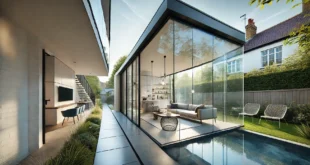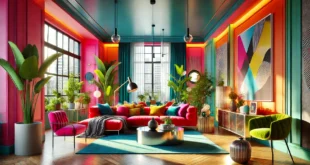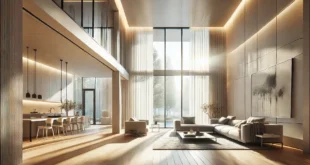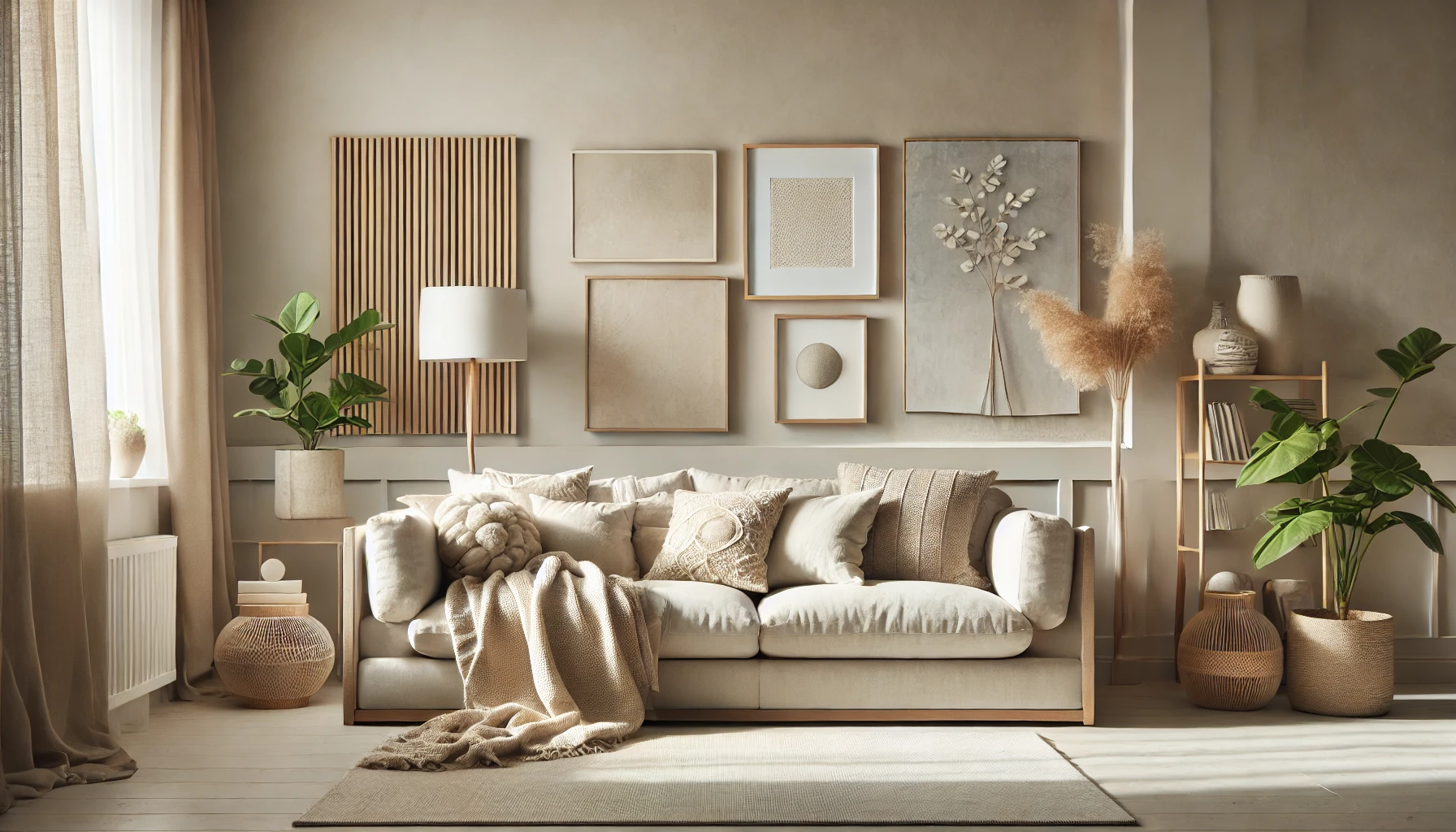
Welcome to a world of refined elegance where simplicity meets sophistication—neutral home design. Whether you’re looking to create a serene living environment or add subtle sophistication to your home, neutral tones offer the perfect canvas. We specialize in turning homes into timeless sanctuaries by incorporating neutral palettes that never go out of style. This article will guide you through a variety of ideas for creating a beautiful neutral home, from choosing the best color palettes to adding texture and depth to your decor. With our expertise, you can create a space that reflects calm, elegance, and balance.
In this guide, we’ll dive deep into the world of neutral home design, providing tips, trends, and creative ideas that you can implement in any room. Ready to transform your space into a haven of tranquility? Let’s explore the beauty and versatility of neutral home design.
Neutral Home Design Ideas: A Blend of Simplicity and Elegance
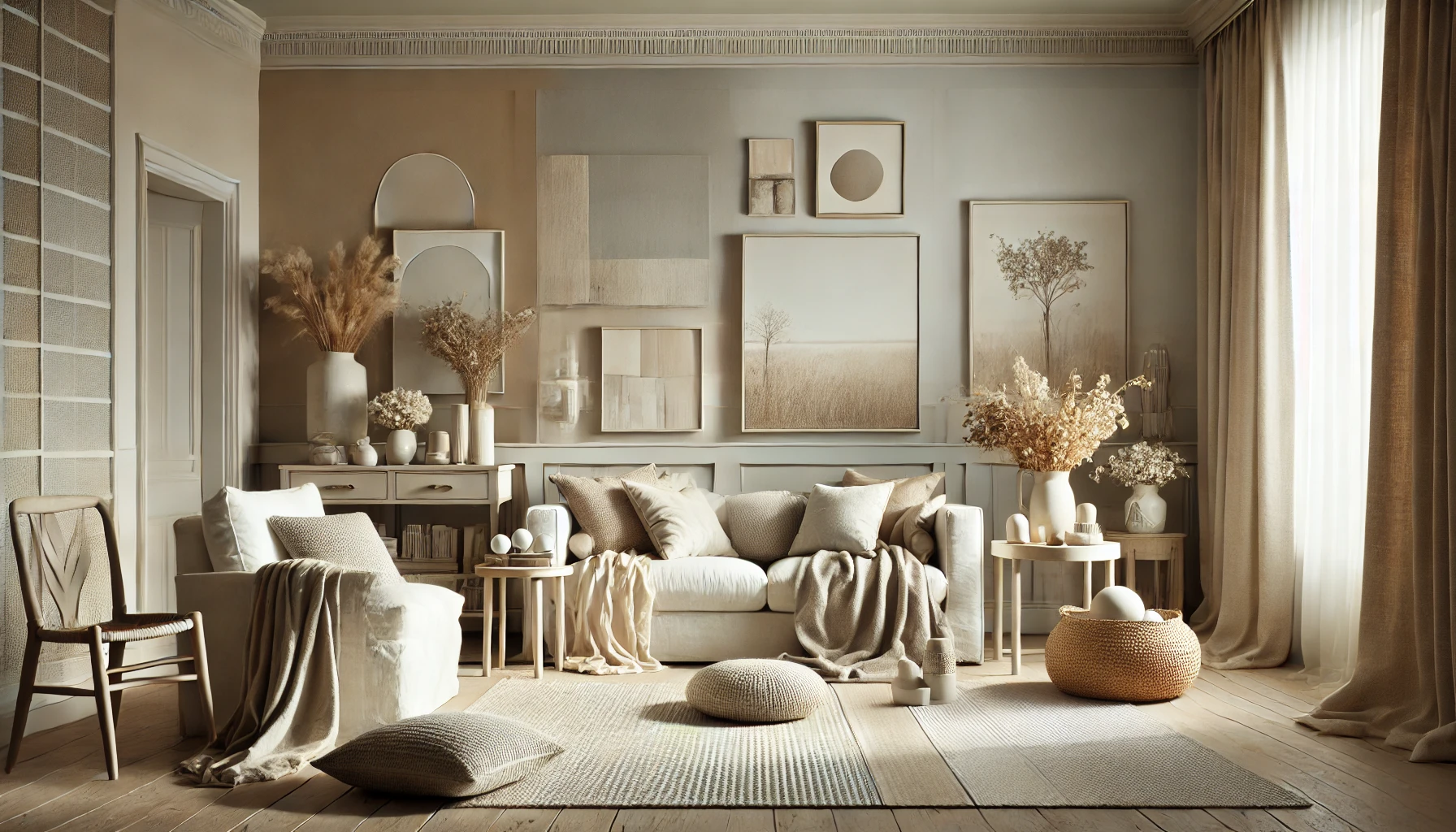
Choosing the Right Neutral Color Palette
The key to any neutral home design is selecting the right color palette. Popular choices include shades of white, beige, taupe, gray, and greige. These hues create a calming and sophisticated backdrop, allowing you to build on with layers of texture and accent colors.
While neutral tones are subtle, they don’t have to be boring. By mixing warm and cool tones, you can create depth and dimension in any room. For example, pairing a cool gray wall with warm beige furnishings adds contrast while maintaining a cohesive look.
Using Texture to Add Depth
In neutral home design, texture plays a significant role in preventing spaces from feeling flat. Introduce a variety of textures through fabrics like linen, wool, and velvet. These materials not only add visual interest but also make the space feel cozy and inviting.
Consider using textured rugs, throw pillows, or woven baskets to create layers of texture in your space. By mixing textures, you can achieve a look that is both sophisticated and comfortable.
Best Neutral Color Palettes for Home Design
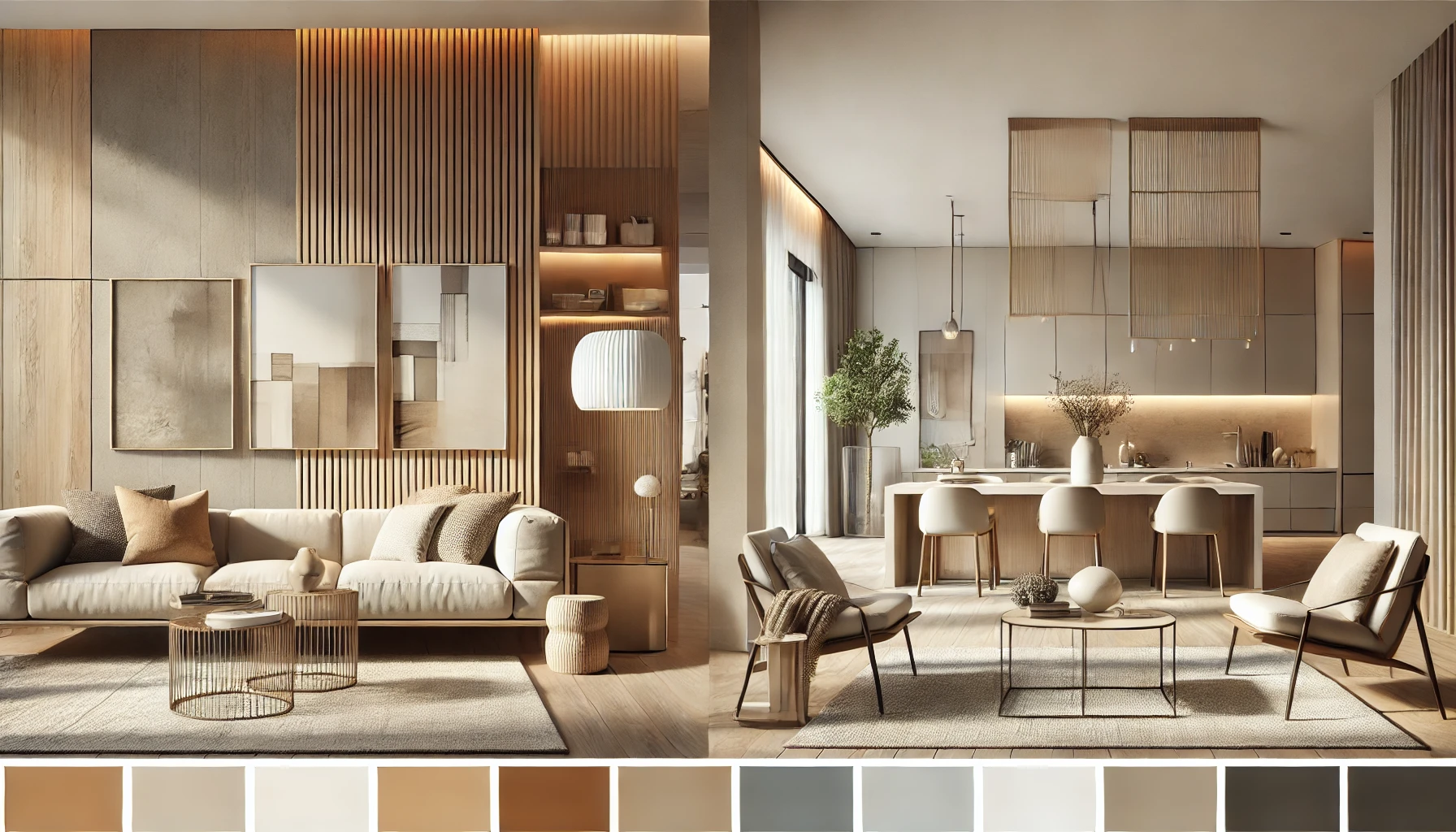
Warm Neutrals for a Cozy Atmosphere
Warm neutrals, such as soft beiges, taupes, and cream tones, create a cozy and welcoming atmosphere. These colors work particularly well in living rooms and bedrooms, where comfort is key. Pairing warm neutrals with natural materials like wood or stone can enhance the cozy vibe.
Incorporate warm neutrals into your furniture, textiles, and accessories to add warmth and comfort without overpowering the room’s design.
Cool Neutrals for a Sleek and Modern Look
For a more contemporary feel, opt for cool neutrals like gray, white, or soft greige. These colors offer a sleek and modern aesthetic, perfect for minimalist homes or spaces with a more structured design approach.
Cool neutrals can be paired with metal accents or glass furniture to create a polished and sophisticated look, adding an edge to the overall design.
Modern Neutral Interior Design: Clean and Timeless
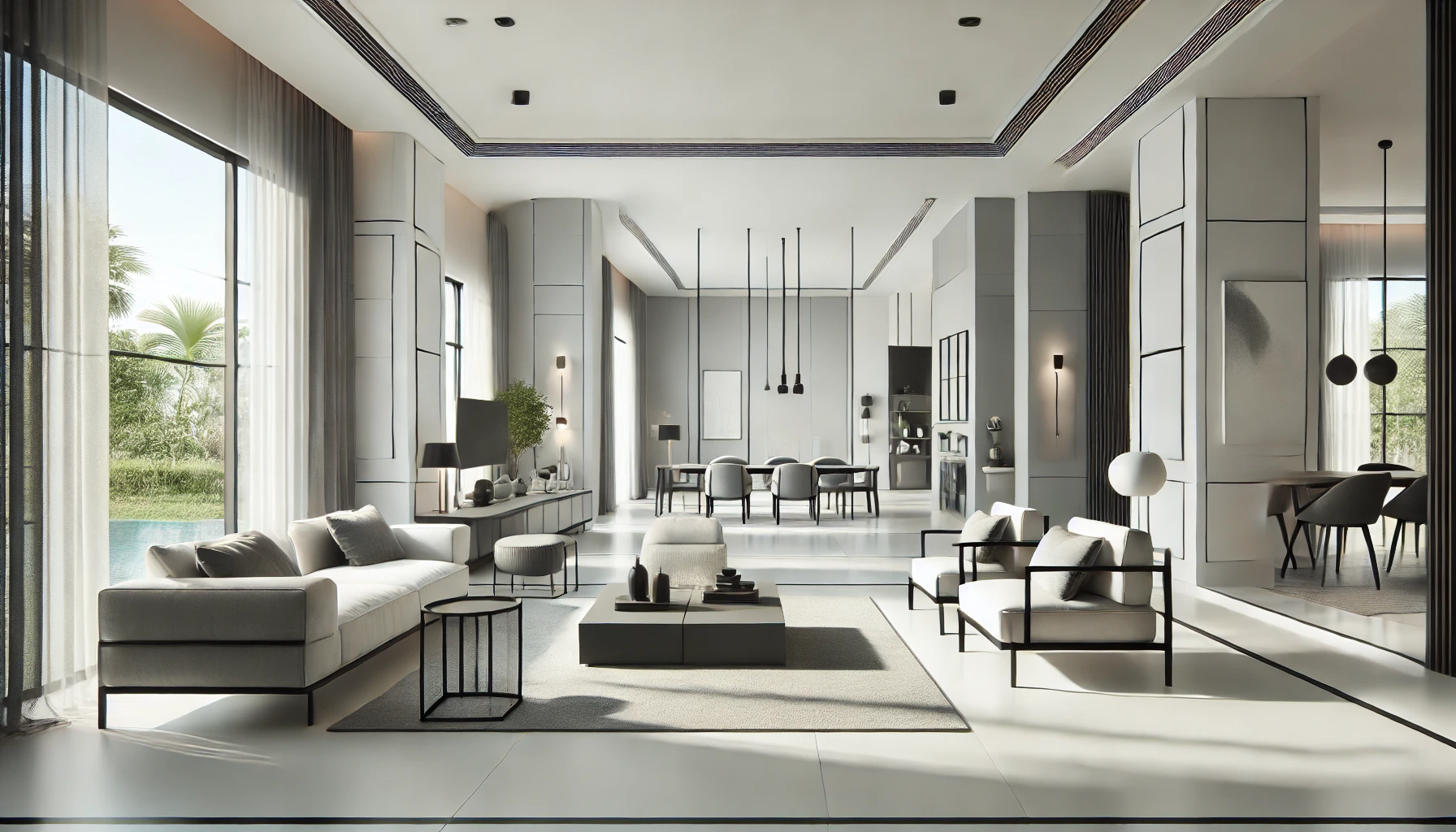
Open-Concept Spaces with Neutral Tones
Modern interior design often features open-concept layouts that allow light to flow freely. Neutral tones, such as whites and grays, provide the perfect backdrop for these spacious environments, creating a clean and cohesive look.
Incorporating neutral tones into an open-concept space helps create a seamless transition between rooms, ensuring that the design feels consistent and balanced throughout the home.
Monochromatic Schemes with a Touch of Contrast
Another approach to modern neutral design is using a monochromatic scheme with varying shades of the same color. For example, a room featuring different shades of gray can feel cohesive yet dynamic, thanks to the subtle contrast between light and dark tones.
Adding contrasting elements, such as black metal or dark wood furniture, can create a sense of depth and keep the design visually interesting.
Neutral Home Decor Tips: Simple Yet Impactful Changes
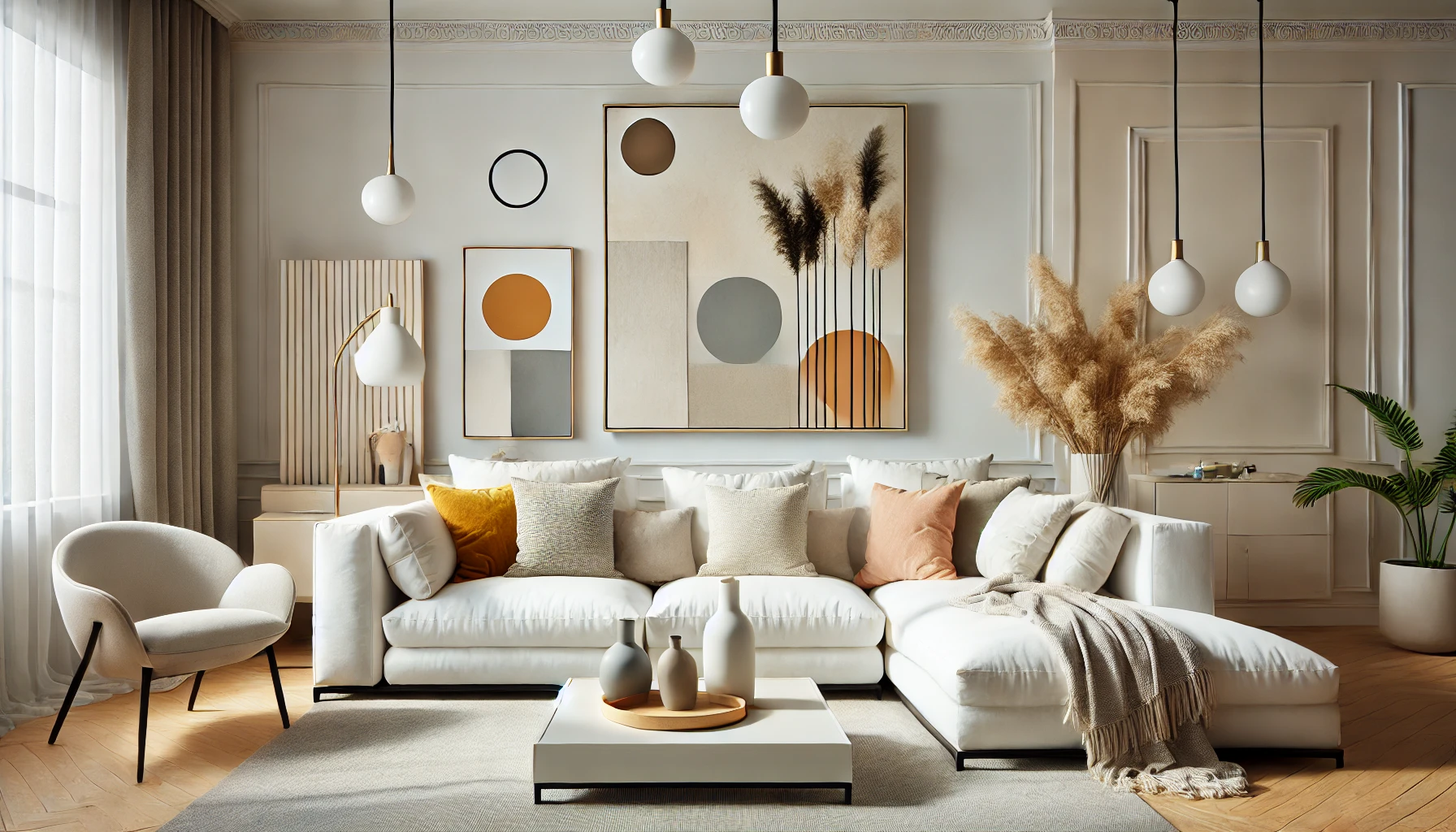
Layering Neutrals for Depth
When decorating with neutrals, layering is essential to add depth to the design. Mix different shades of neutral colors in the same room to create a sophisticated yet inviting look. For example, you can layer white walls with cream or beige furniture and light gray accents to achieve a balanced, layered effect.
This approach works well in any room and allows you to create a cohesive look without the space feeling too monotone or flat.
Adding Pops of Color to Neutral Spaces
If you love the clean look of a neutral home but want to add some personality, consider incorporating pops of color. A vibrant throw pillow, an art piece, or a bold area rug can bring life to a neutral room while keeping the overall design calm and elegant.
Be strategic with your color choices—too many colors can overwhelm the space, so it’s best to stick with one or two accents to maintain the balance of the room.
Neutral Living Room Design Ideas: Creating a Welcoming Space
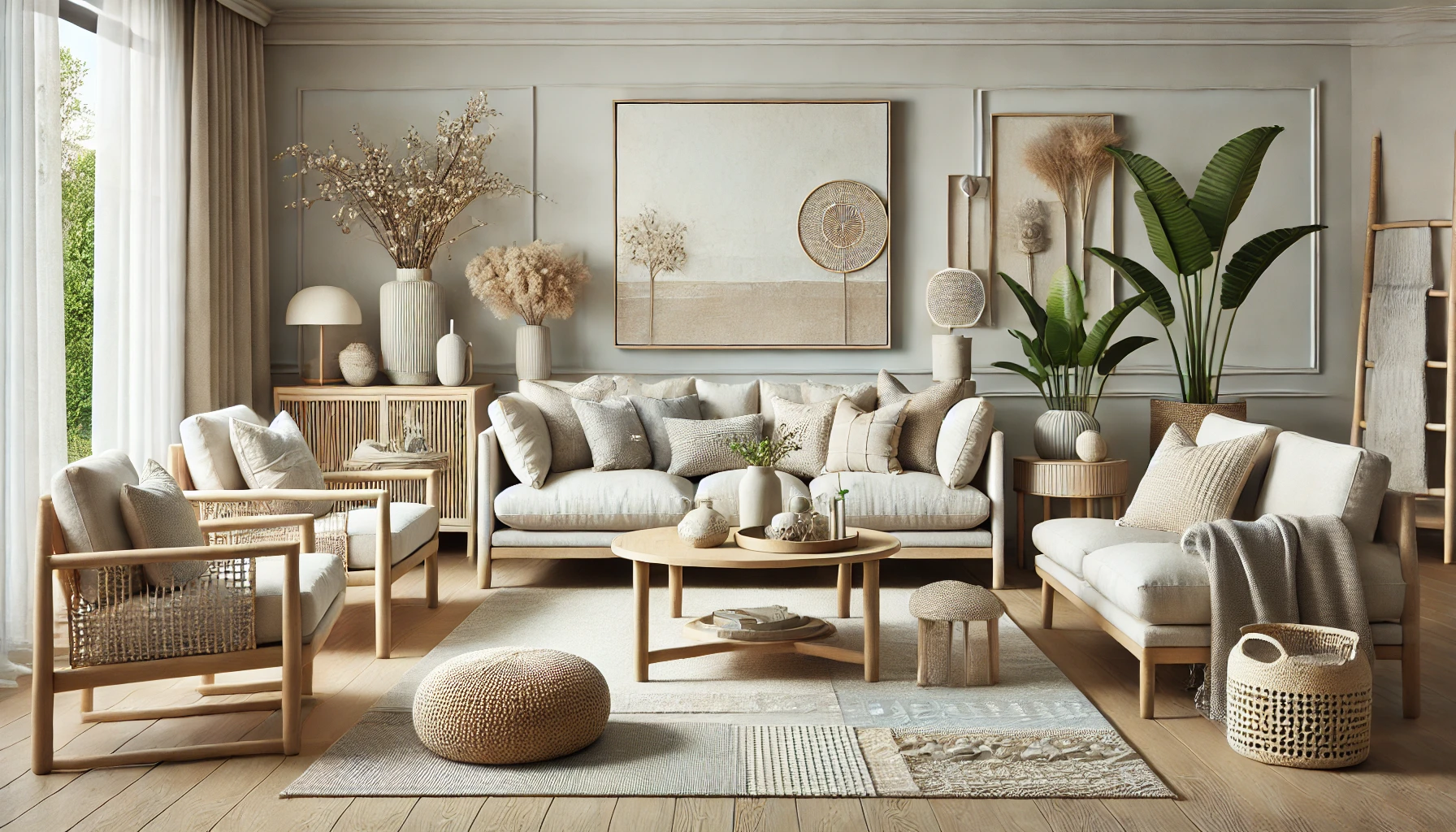
Neutral Sofas and Accent Chairs
In a neutral living room, the furniture plays a central role in setting the tone of the space. Choose a neutral sofa in a shade like gray, beige, or cream as your focal point. You can then build on this with accent chairs, rugs, and throw pillows in similar tones to create a cohesive design.
Neutral-colored furniture offers versatility, allowing you to change your decor easily as trends or personal preferences evolve.
Incorporating Natural Elements
One of the most popular trends in neutral living room design is incorporating natural elements. Wooden coffee tables, rattan baskets, or plants can add texture and warmth to the space. These organic touches balance the neutral tones, creating a more inviting and relaxing atmosphere.
Natural materials are timeless and pair perfectly with neutral color schemes, offering an effortless way to elevate your design.
How to Design a Neutral Bedroom: Calm and Cozy Retreat
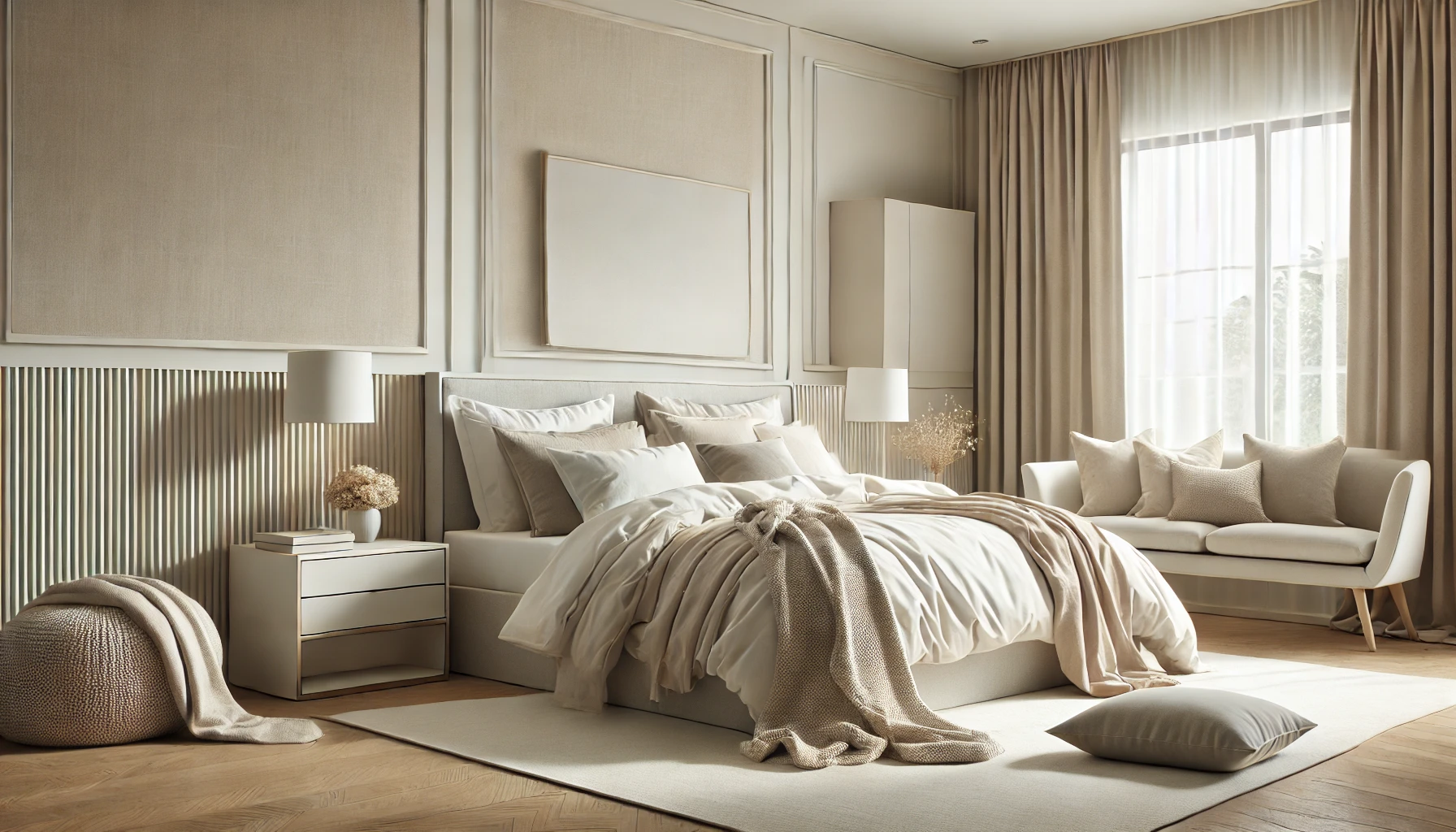
Soft Bedding in Neutral Tones
Your bedroom should be a calming retreat, and neutral tones are the perfect way to achieve this. Opt for soft bedding in neutral shades like white, beige, or gray to create a serene and peaceful environment. Layer your bed with pillows and throws in similar tones for a luxurious feel.
Neutral bedding offers flexibility, allowing you to easily update your bedroom decor with different accent colors or accessories over time.
Using Minimalist Furniture
In a neutral bedroom, minimalist furniture works best to maintain the clean, uncluttered look. Choose simple, streamlined pieces like a platform bed, sleek nightstands, and unadorned dressers. These pieces keep the design looking modern and timeless.
By keeping the furniture minimal, you allow the neutral tones and textures to take center stage, creating a calming atmosphere.
Embrace Neutral Design for Timeless Elegance
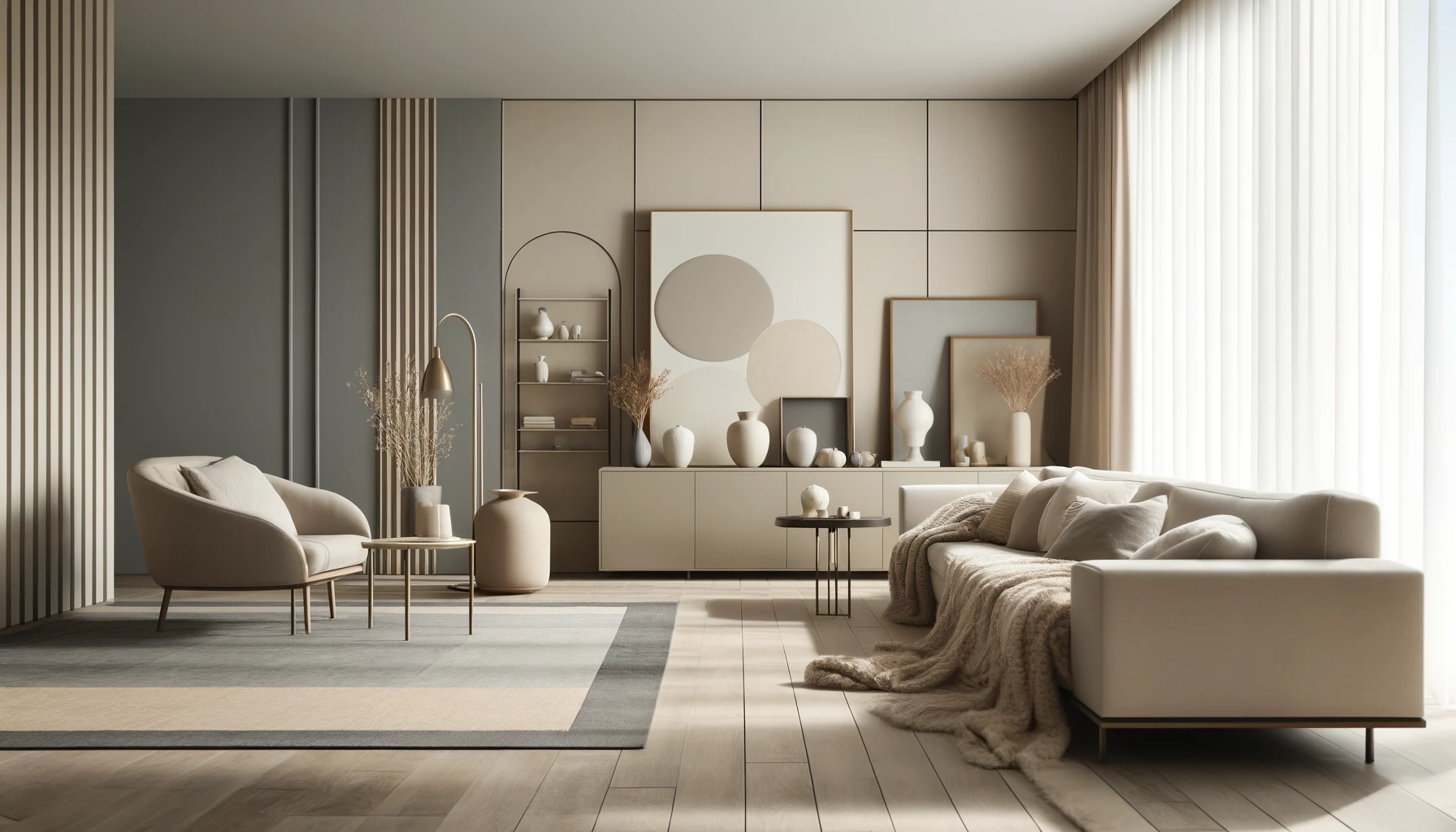
Neutral home design is the perfect solution for creating a timeless and elegant space that offers both versatility and sophistication. By choosing the right color palettes, incorporating texture, and using minimalistic decor, you can create a home that feels balanced, harmonious, and effortlessly stylish. We’re passionate about helping homeowners create their dream spaces, and we’re here to guide you every step of the way.
Ready to bring neutral elegance into your home? Contact us today to start your journey towards a beautifully designed, neutral home that will stand the test of time.
Let’s Make Your Dream Home a Reality
Thank you for exploring our neutral home design ideas. We hope this guide has inspired you to incorporate neutral tones into your home for a refined, timeless look. We believe that every home should reflect the unique style and personality of its owner, and we’re here to make that happen with personalized design solutions tailored to your vision.
Don’t wait to create the home of your dreams. Contact us today to schedule a consultation, and let’s start turning your vision into reality with our expert design services.
F.A.Q: Neutral home design
What are the best neutral colors for home design?
The best neutral colors for home design include shades of white, beige, gray, taupe, and greige. These colors offer a timeless and versatile foundation, allowing you to create a calm and elegant atmosphere in any room.
How do I add warmth to a neutral home design?
You can add warmth to a neutral home design by incorporating natural materials like wood, leather, and textiles. Warm tones like beige or taupe, along with layered textures such as rugs, pillows, and blankets, can make neutral spaces feel cozy and inviting.
How can I make a neutral room more interesting?
To make a neutral room more interesting, use a variety of textures and patterns. Incorporate different materials such as linen, velvet, or rattan to add depth and dimension. You can also add pops of color with accessories like throw pillows, artwork, or plants.
What is a modern neutral interior design?
Modern neutral interior design emphasizes simplicity, clean lines, and a minimalistic approach. It uses a neutral color palette of whites, grays, and beiges, often paired with sleek furniture and minimalist decor for a sophisticated and contemporary look.
What is the difference between warm and cool neutral tones?
Warm neutral tones, such as beige, taupe, and cream, have a yellow or red undertone, creating a cozy and welcoming atmosphere. Cool neutral tones, such as gray, white, and blue-based neutrals, have a more crisp and modern feel, offering a sleek, clean look.
How do I add color to a neutral home design?
Adding color to a neutral home design can be done through accessories such as throw pillows, rugs, artwork, or curtains. You can also introduce color through accent walls, bold furniture pieces, or plants, while keeping the overall design calm and neutral.
What are the benefits of neutral home design?
Neutral home design offers versatility, timelessness, and flexibility. It allows you to easily change decor without the need for a major redesign. Neutral tones also create a calming and serene environment, making spaces feel more open and inviting.
How can I incorporate texture into a neutral room?
To incorporate texture into a neutral room, use materials such as wool, linen, leather, or wood. Layering different textures in furniture, rugs, pillows, and curtains helps add depth and interest to the space, making it feel more dynamic and cozy.
What are popular neutral color palettes for modern homes?
Popular neutral color palettes for modern homes include combinations of white, gray, beige, and greige. These tones can be paired with black or metallic accents for a sleek, modern look that is both stylish and timeless.
How do I create a minimalist neutral home design?
Creating a minimalist neutral home design involves using a simple, neutral color palette with clean lines and uncluttered spaces. Focus on functionality and choose minimalist furniture pieces, with subtle decor that complements the neutral tones without overwhelming the space.
What are the latest trends in neutral home design?
Latest trends in neutral home design include using earthy tones like clay and terracotta, incorporating organic materials like wood and stone, and adding textural elements such as boucle fabrics and woven accents. These trends bring warmth and depth to neutral spaces.
How do I choose neutral colors for a small room?
When choosing neutral colors for a small room, opt for lighter shades like soft whites, beiges, or light grays. Lighter neutrals make the space feel larger and more open, while dark neutrals can make the room feel cozy but may also reduce the perception of space.
What are the best neutral colors for a living room?
The best neutral colors for a living room include shades of beige, gray, white, and greige. These colors provide a calm and versatile backdrop, allowing you to introduce a variety of textures, materials, and accents to create a welcoming and stylish space.
How can I design a neutral kitchen?
To design a neutral kitchen, use a palette of white, gray, or beige for the cabinetry, countertops, and walls. You can add interest by incorporating natural materials like wood or marble, and by using modern appliances and minimalist fixtures to maintain a clean, sleek look.
Can neutral home design work in any style?
Yes, neutral home design can work in any style, from modern and minimalist to traditional or rustic. The versatility of neutral tones allows them to blend seamlessly with various design elements, making them an ideal foundation for any decor style.
 Home Designing Get expert home decor tips and design inspiration at HomeDesigning.blog. Transform your living spaces with trending styles and DIY ideas!
Home Designing Get expert home decor tips and design inspiration at HomeDesigning.blog. Transform your living spaces with trending styles and DIY ideas!
